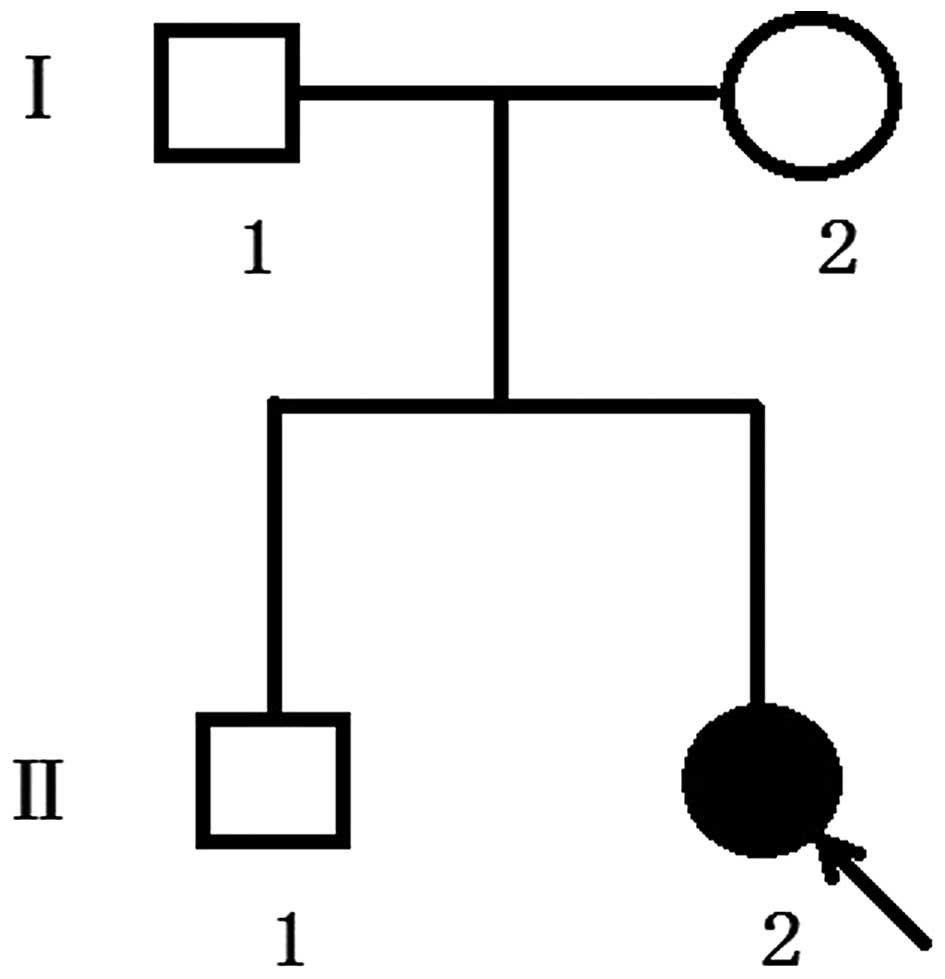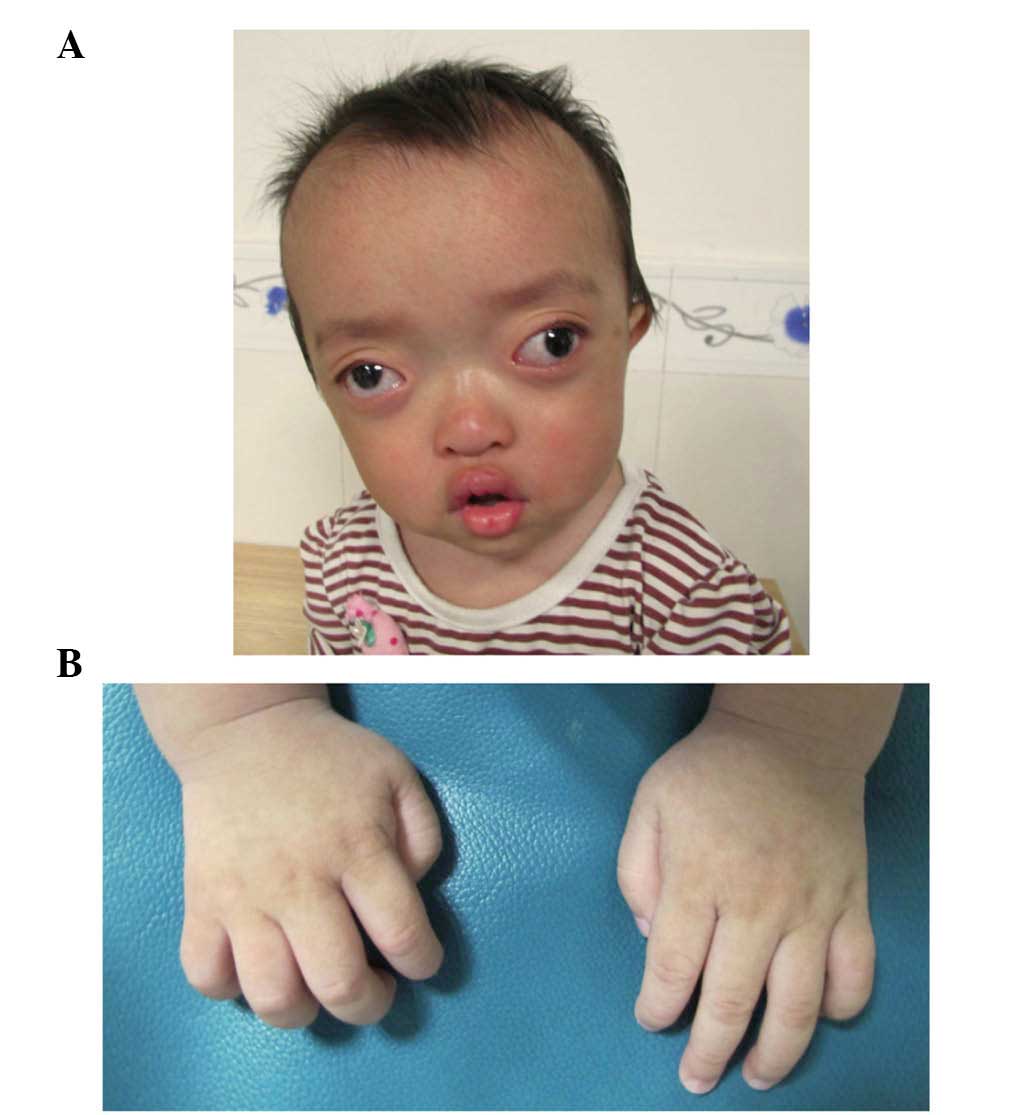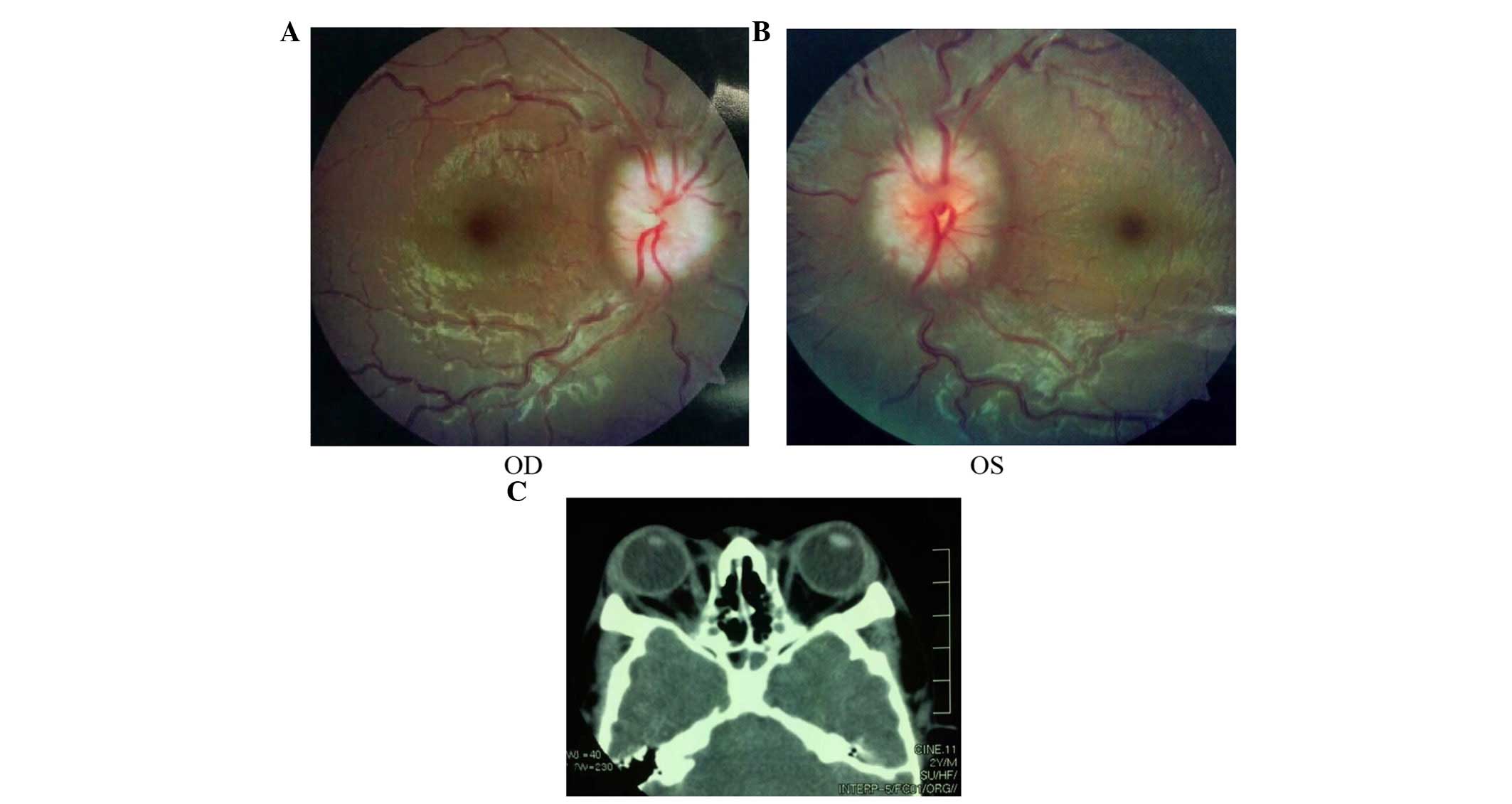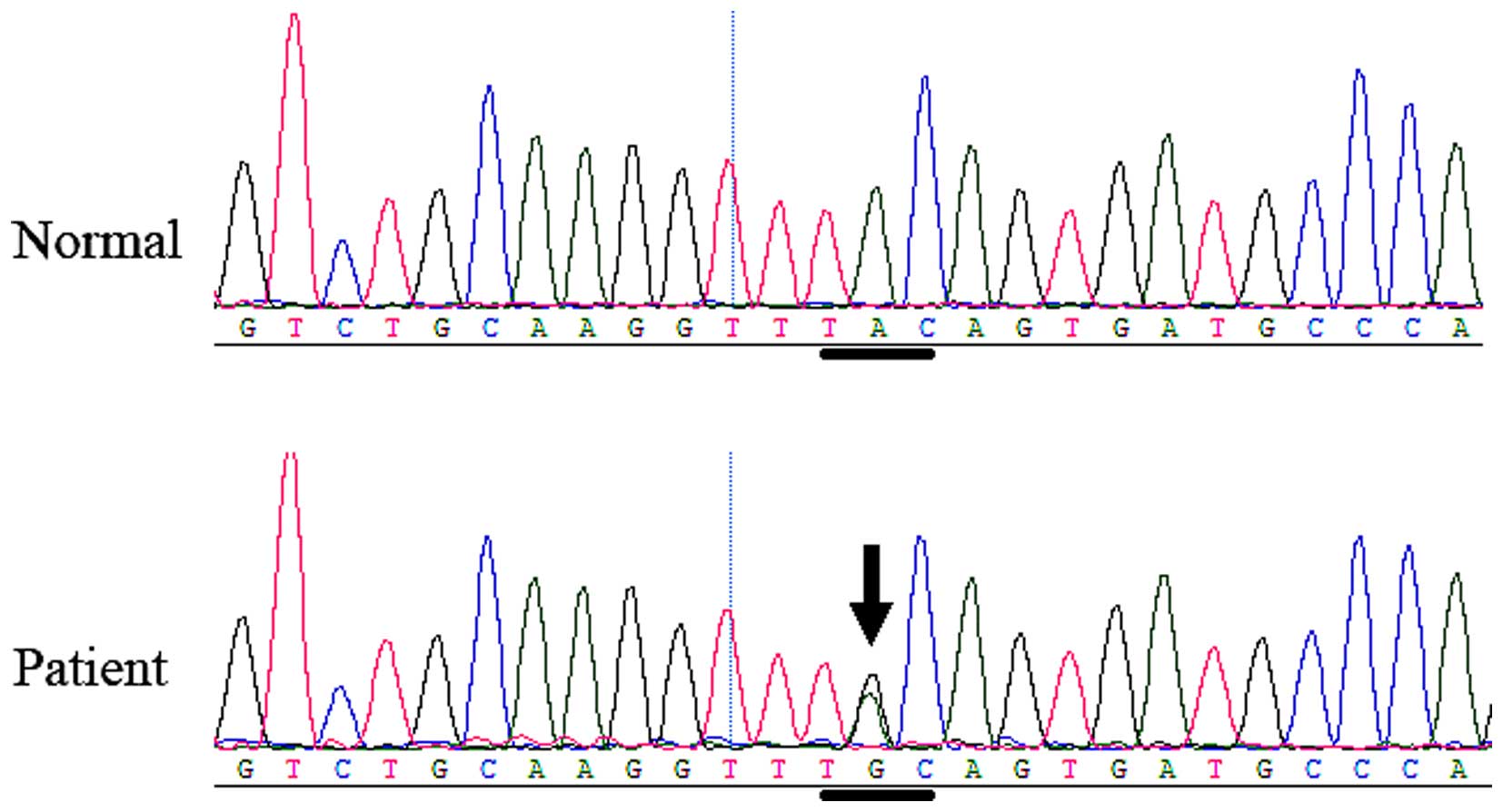Molecular analysis of FGFR 2 and associated clinical observations in two Chinese families with Crouzon syndrome
- Authors:
- Published online on: July 11, 2016 https://doi.org/10.3892/mmr.2016.5497
- Pages: 1941-1946
-
Copyright: © Lin et al. This is an open access article distributed under the terms of Creative Commons Attribution License.
Metrics: Total
Views: 0 (Spandidos Publications: | PMC Statistics: )
Total PDF Downloads: 0 (Spandidos Publications: | PMC Statistics: )
Abstract
Crouzon syndrome, a dominantly inherited disorder and the most common type of craniosynostosis syndrome, is caused by mutations in the fibroblast growth factor receptor 2 (FGFR 2) gene, and characterized by craniosynostosis, shallow orbits, ocular proptosis, midface hypoplasia and a curved, beak‑like nose. The purpose of the present study was to investigate the fibroblast growth factor receptor 2 (FGFR 2) gene in two Chinese families with Crouzon syndrome and to characterize the associated clinical features. Two families underwent complete ophthalmic examination, and three patients in two families were diagnosed with Crouzon syndrome. Genomic DNA was extracted from leukocytes of peripheral blood samples, which were collected from the family members and 200 unrelated control subjects from the same population. Exons 8 and 10 of the FGFR 2 gene were amplified using polymerase chain reaction analysis and were directly sequenced. Ophthalmic examinations, including best‑corrected visual acuity, slit‑lamp examination, fundus examination and Computerized Tomography scans, and physical examinations were performed to exclude systemic diseases. These patients were affected with shallow orbits and ocular proptosis, accompanied by midface hypoplasia, craniosynostosis, strabismus or papilloedema, with clinically normal hands and feet. A heterozygous FGFR 2 missense mutation, c.811‑812insGAG (p.273insGlu) in exon 8 was identified in the affected individual, but not in the unaffected family members or the normal control individuals in family 1. In family 2, another heterozygous FGFR 2 missense mutation, c.842A>G (P.Tyr281Cys or Y281C), in exon 8 was identified in the affected boy and his mother, but not in the unaffected family members or the normal control individuals. Although FGFR 2 gene mutations and polymorphisms have been reported in various ethnic groups, particularly in the area of osteology, the present study reported for the first time, to the best of our knowledge, the identification of two novel FGFR 2 gene mutations in Chinese patients with Crouzon syndrome.
















